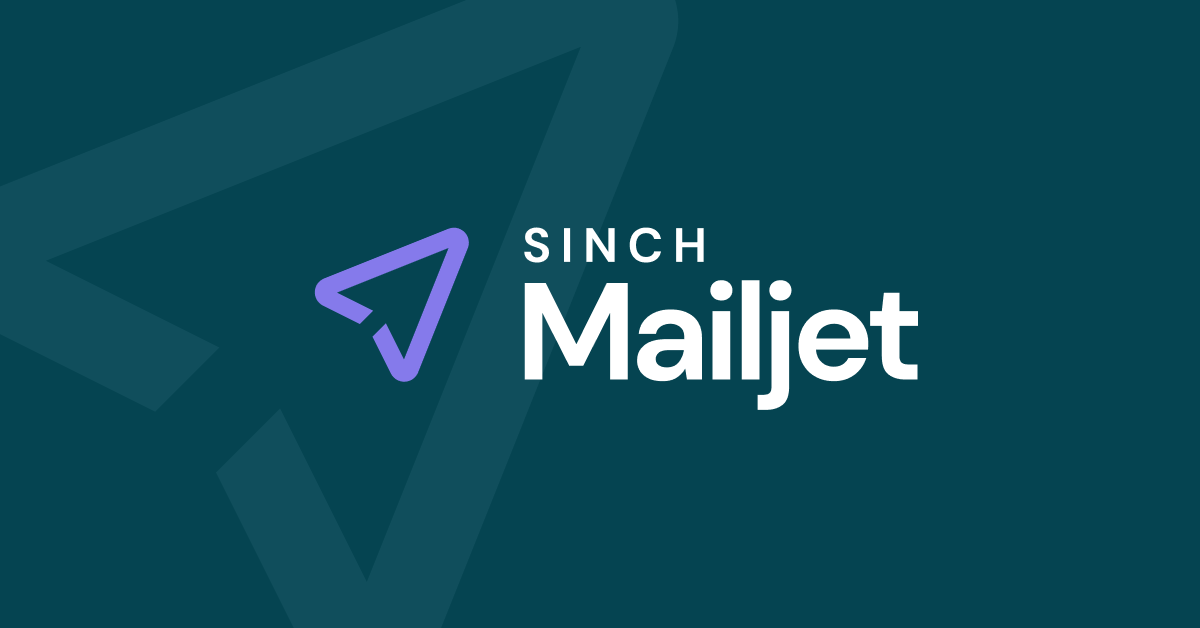Marketing
The 9 best email marketing services in 2025 compared
Choosing the right email marketing platform can make all the difference in how effectively you engage your audience, automate campaigns, and drive conversions. And, with so many options available, it’s essential to find a service that fits your needs.

PUBLISHED ON
If you're running a business, email is still one of the best ways to connect with customers. Whether you're sending out product announcements, welcome sequences, newsletters, or promotions, email gives you a direct line to your audience – and it's one of the few marketing channels you truly own.
In fact, data from Mailjet's email engagement report shows that 75.4% of consumers in the U.S., UK, France, Germany, and Spain prefer email for receiving promotional messages, and 74% favor it for transactional communications over all other channels.
But here's the catch – there are a lot of email marketing platforms out there. Some are built for scrappy startups, others for massive enterprise teams. Some are automation-heavy, while others keep things simple. Choosing the right one can feel overwhelming fast.
We've spent years testing and writing about marketing tools and know how the top email platforms have evolved. This guide cuts through the noise. Whether you're a solo founder or part of a growing team, you’ll find the email tool that fits how you actually work.
Let’s dive into the best email marketing platforms and, hopefully, which one makes the most sense for your business.
Table of contents
Table of contents
01What makes an email marketing platform the “best”?
02The best email marketing platform pricing
03Best for budget-conscious teams: Mailjet
04Best for getting started: Mailchimp
05Best for digital creators: Kit (formerly ConvertKit)
06Best for social-savvy brands: Constant Contact
07Best for long-standing reliability: AWeber
08Best for all-in-one marketing: HubSpot
09Best for online stores: Omnisend
10Best for multi-channel campaigns: Brevo
11Best for serious automation: ActiveCampaign
12Which platform is right for your business and use case?
13Deciding on the best email marketing platform for you
14Finding the right email platform for your business
15Frequently asked questions about choosing an email service
What makes an email marketing platform the “best”?
To put this list together, we spent hours digging into dozens of email tools, setting up campaigns, building automations, testing templates, and poking around integrations.
And no, none of these companies paid to be included. Every pick here earned its spot based on real testing and real use cases.
Email marketing isn’t just about hitting "send" anymore. Today’s platforms can segment, trigger, and personalize your emails automatically (if you choose the right one). But let’s be honest – a lot of email tools are either overbuilt for enterprise teams or underwhelming for anyone serious about growth.
So, we narrowed things down with five must-haves in mind.
1. Easy to use, even if you’re not technical
You shouldn’t need to hire an agency or spend a weekend reading docs to get started. The tools we recommend make it easy to build a list, create campaigns, and automate sends – right from a clean dashboard. If it felt clunky or confusing, it didn’t make the cut.
2. Built-in automations that actually work
Whether you're sending a welcome email or a post-purchase follow-up, automations should be simple to set up and reliable once live. All the tools on this list make it easy to automate customer journeys without needing to write a single line of code.
3. Integrations with the tools you already use
Your email app should play nicely with your eCommerce platform, booking software, CRM, or whatever else you’re running. We only picked tools with solid integrations (or at least a Zapier fallback) so you can connect the dots and keep your workflow smooth.
4. Pricing that makes sense for small businesses
We searched for platforms with affordable entry-level plans or pay-as-you-go options – no expensive commitments or minimum volume requirements. Whether you’ve got 100 contacts or 10,000, you should be able to start small and grow.
5. Room to scale when you’re ready
Growing your list shouldn’t mean getting boxed into a pricey enterprise plan. Every tool here supports scaling up your campaigns, lists, and automations without the sticker shock. If you’re looking for a platform that can meet you where you are – and most importantly, grow with you – this list is for you.
The best email marketing platform pricing
For small businesses and marketing teams working with limited budgets, understanding the costs associated with different email marketing platforms is just as crucial as evaluating their features. While many services offer free plans for those just starting out, these often come with limitations that can hinder your growth as your subscriber list expands.
When comparing pricing across platforms, consider the following common pricing structures and tiers:
Contact-based pricing: Many email marketing services charge based on the number of subscribers in your database, with tiered pricing plans that accommodate increasing list sizes. Be aware of any overage fees or contact limits that could impact your costs as your audience grows.
Email volume-based pricing: Some platforms charge based on the number of emails sent per month, which can be a more cost-effective option for businesses with smaller subscriber lists or less frequent sending cadences.
Feature-based pricing: Pricing tiers may also be determined by the features and level of support included, with higher-priced plans unlocking advanced automation, segmentation, and analytics capabilities.
Free plans: Most email marketing services offer a free plan with basic features and limited sending capacity. While these can be a great option for those just starting out, be mindful of any limitations that may restrict your ability to scale or access critical functionalities.
Enterprise pricing: For larger organizations with extensive email marketing needs, custom enterprise pricing plans offer tailored solutions, dedicated support, and higher sending limits to accommodate high-volume campaigns.
When evaluating pricing of different email marketing platforms, it's essential to balance your current needs with your long-term goals. While a lower-priced plan may seem attractive initially, ensuring the platform can scale with your business as your subscriber list and email marketing requirements evolve is crucial for avoiding costly migrations down the line.
Best for budget-conscious teams: Mailjet

Mailjet isn’t just easy on your wallet – it’s stacked with useful features. Every plan includes access to a clean, intuitive platform where you can create and send both marketing and transactional emails, build forms, and launch landing pages without much of a learning curve.
Unlike many competitors, Mailjet doesn’t charge based on how many contacts you have. You only pay for the number of emails you send, which keeps pricing predictable even as your list grows. And, thanks to its straightforward UI and pricing model, Mailjet is a go-to for startups and growing teams who want solid email tools without a steep cost.
Key features
Drag-and-drop email editor
Pre-designed and customizable templates
Workflow automation for marketing and transactional emails
Developer-friendly API access
Team collaboration tools with real-time editing
Drawbacks
No built-in CRM
Doesn’t support SMS, WhatsApp, or other channels
Pricing
Free: Up to 6,000 emails/month
Essential: $17/month for core features
Premium: $27/month for advanced automations
Enterprise: Custom pricing
Best for getting started: Mailchimp

If you're new to email marketing, Mailchimp is often the first name you’ll hear – and for good reason. It’s beginner-friendly, offers a solid free plan (with up to 500 contacts), and makes it easy to build your first campaign. That said, as your strategy matures, you might bump into limitations, especially around automation and customization.
Key features
Intuitive interface
Free plan for up to 500 contacts
Basic drag-and-drop website builder
Drawbacks
No A/B testing in automated workflows
Limited customization for landing pages and pop-ups
Paid plans can get expensive for advanced tools
Pricing
Free: 500 contacts and 1,000 emails/month
Paid: Plans scale with features and number of contacts
Best for digital creators: Kit (formerly ConvertKit)

Kit is built with creators in mind, especially bloggers, YouTubers, and solo entrepreneurs. It’s designed to grow your list and automate follow-ups, even on the free plan. The free version supports up to 10,000 subscribers, but more advanced tools like multi-sequence automation and funnels require a paid upgrade.
Key features
Streamlined automation tools
Deep integrations with Shopify, Zapier, and more
Custom domains and landing pages
Drawbacks
Free plan is feature-light
Higher-tier tools locked behind a paywall
Pricing
Free: Up to 10,000 subscribers on a single sequence
Paid: Starts $29/month for 1,000 subscribers
Best for social-savvy brands: Constant Contact

Looking to pair your email campaigns with your social media strategy? Constant Contact has you covered. Its drag-and-drop editor is easy to use, and its email delivery rates are consistently solid.
It’s a great fit for brands that live on Facebook and Instagram, but the more powerful plans might be pricey for smaller teams.
Key features
Automated campaign options
High deliverability
Built-in social media integrations
Drawbacks
Simple form builder
Premium plans can be expensive
Pricing
Free trial: 30 days
Starts at: $12/month
Best for long-standing reliability: AWeber

AWeber has been around for over two decades and is trusted by solo entrepreneurs and small business owners alike. Its easy-to-use platform includes pre-built templates, automation, and integrations with platforms like Etsy and YouTube.
While it’s not the most advanced option out there, it nails the basics and includes solid analytics and testing tools.
Key features
Email automations with templates
A/B testing and web analytics
App marketplace for integrations
Drawbacks
No spam or visual design testing
Only available in English
Pricing
Free: Up to 500 subscribers
Paid: Starts at $15/month
Best for all-in-one marketing: HubSpot

HubSpot does more than email– it’s a full CRM and marketing suite wrapped into one. You can manage contacts, build automated email flows, and track performance all in one dashboard. The free tier is surprisingly generous, but if you need the more advanced automation features, be ready for a jump in price.
Key features
All-in-one CRM and marketing platform
Strong contact management tools
In-depth analytics and reports
Drawbacks
High cost for pro-level automation
Free version includes HubSpot branding
Pricing
Free: Includes 1,000 contacts and up to 2,000 emails/month
Professional: Starts at $880/month
Best for online stores: Omnisend

Omnisend is purpose-built for e-commerce brands. It includes omnichannel marketing tools such as SMS and push notifications right out of the box, even on the free plan. Just note that while it's rich in features, it doesn’t offer the best email deliverability or the most visually diverse templates.
Key features
Omnichannel marketing (email, SMS, push)
Tailored for e-commerce workflows
Responsive editor
Drawbacks
Limited email template variety
Mixed deliverability performance
English-only support
Pricing
Free: Up to 250 contacts and 500 emails
Paid: From $16/month
Best for multi-channel campaigns: Brevo

Brevo (formerly Sendinblue) makes it easy to combine email, SMS, and live chat into one unified platform. It’s ideal for businesses that want everything under one roof, and its UI is clean and easy to navigate. However, you’ll hit some limitations with analytics unless you’re on a higher-tier plan.
Key features
Supports email, SMS, and live chat
Built-in CRM
Clean and simple interface
Drawbacks
Basic reporting on lower tiers
Deliverability can vary
Pricing
Free: Up to 300 emails/day
Starter: From $9/month
Best for serious automation: ActiveCampaign

ActiveCampaign is a powerhouse for businesses that want to go beyond simple email blasts. It combines advanced marketing automation with a built-in CRM, giving you full control over the entire customer journey. From detailed workflows to dynamic content and smart segmentation, it’s a tool built for teams who want depth – but with that comes a steeper learning curve (and a higher price tag).
Key features
Sophisticated automation for marketing and sales
CRM with pipeline and task management
Excellent deliverability and support
Free white-glove migration
Landing page builder with dynamic content
Drawbacks
No free version
Costs more than most competitors
Custom reporting options are limited
Not beginner-friendly
You can’t export deal pipelines
Pricing
Free trial: 14 days
Starter Plan: $15/month (up to 1,000 contacts)
Plus: $49/month and up, includes CRM and more
Professional & Enterprise: Advanced automation, support, and analytics at higher price points
If you need deep automations and baked-in sales tools, ActiveCampaign is a solid bet. Just expect to put in the work (and the budget).
Which platform is right for your business and use case?
The right email marketing tool really depends on who you are and what you're trying to achieve. A scrappy small business has very different needs than an online store or a nonprofit – and the best platforms reflect that. Here's how to think about your options based on your use case:
Small businesses
If you're running a small business with a tight team (or it’s just you), you probably care most about simplicity, affordability, and tools that save time. Look for platforms with intuitive dashboards, helpful support, and automation that doesn’t require a PhD in marketing. Bonus points if the pricing grows with you without getting out of hand.
E-commerce brands
For online stores, email isn’t just a communication tool, but a revenue driver. That means you need advanced features like abandoned cart emails, product recommendations, and integrations with Shopify, WooCommerce, or whatever you’re using. Behavioral triggers and personalized automations go a long way toward increasing conversions.
Nonprofits
Nonprofits need to stretch every dollar, so email tools that offer discounted pricing – or free nonprofit plans – can make a huge difference. You’ll also want features like customizable templates, donor segmentation, and integrations with fundraising platforms to keep supporters engaged and informed without adding more to your team’s plate.
B2B companies
If you're in B2B, your email strategy is all about nurturing leads and moving deals through the pipeline. You’ll want something that plays nicely with your CRM, supports lead scoring, and offers tools for account-based marketing. The more connected your email platform is with your broader sales and marketing stack, the better.
Deciding on the best email marketing platform for you
Choosing the right email marketing service for your business requires careful consideration of your unique needs, goals, and resources. By evaluating key factors like core features, pricing and affordability, use case alignment, integration possibilities, scalability, advanced capabilities, and analytics and reporting tools, you can narrow down your options and select a platform that will support your success.
Remember, the best email newsletter service for your business is one that strikes the perfect balance between functionality, ease of use, and affordability while offering the flexibility to scale and adapt as your needs evolve. As you embark on your email marketing journey, keep the following key takeaways in mind:
Prioritize core features like automation, segmentation, and analytics to maximize the impact of your campaigns.
Consider your budget and long-term needs when evaluating pricing and affordability.
Align your platform choice with your specific use case and organizational goals.
Ensure your email marketing service can integrate with your existing tools and scale with your business.
Leverage advanced features like deliverability optimization, compliance management, and personalization to create sophisticated, targeted campaigns.
Use comprehensive analytics and reporting to measure success, optimize performance, and demonstrate ROI.
By following these guidelines and carefully evaluating your options, you can select an email marketing service that will serve as a powerful tool for driving engagement, nurturing relationships, and achieving your business objectives. With the right platform at your fingertips, you'll be well-equipped to navigate the ever-evolving digital landscape and build an email marketing strategy that sets your brand apart.
Finding the right email platform for your business
Choosing the best email marketing tool isn’t about finding the flashiest features – it’s about finding the right fit for you. Your business, your goals, and your budget all play a role. The good news? Once you know what to look for, narrowing things down gets a whole lot easier.
Start by focusing on the essentials:
Does the platform offer solid automation, segmentation, and analytics?
Can it grow with you as your list (and ambitions) expand?
Does the pricing make sense—not just today, but six months from now?
You’ll also want to think about your specific use case. Are you running an online store, a nonprofit, or a service-based business? Different platforms shine in different scenarios, and aligning your choice with how you actually operate will save you time and headaches down the road.
Integration matters too. Your email tool should work seamlessly with your CRM, eCommerce setup, analytics tools, and anything else you already rely on. And if you’re ready to dive into advanced features—like deliverability optimization, personalized content, or compliance support—make sure your platform is built for that kind of depth.
To round this guide out, here’s a quick checklist to guide your decision:
Prioritize must-have features like automation, segmentation, and reporting
Weigh pricing against your current needs and future growth
Match the platform to your business model and goals
Look for tools that integrate with your existing tech stack
Explore advanced tools that boost personalization, compliance, and deliverability
Use built-in analytics to track results and improve over time
The right email platform won’t just help you send better emails – it’ll help you build real connections with your audience and drive meaningful growth. So, take your time, test a few options, and find the one that feels like it was made for your business.
Frequently asked questions about choosing an email service
If you’re new to email marketing—or just want to make sure you’re making the most of your current setup – this FAQ covers the most common questions about email marketing services, features, pricing, integrations, and more.
What is an email marketing service, and how does it work?
An email marketing service (or email service provider) is a platform that helps you send marketing and transactional emails to your subscriber list. These tools offer core features like email automation, drag-and-drop editors, signup forms, list segmentation, and performance reports, so you can manage email campaigns efficiently – even if you're not a designer or developer.
How many emails can I send per month?
That depends on your plan type. Some providers offer unlimited emails on higher-tier or business plans, while others have a set number of emails per month or even emails per day. Look closely at the email send limit on each monthly plan, especially if you have a larger list or send frequent bulk emails.
What are transactional emails, and do I need them?
Transactional emails are system-triggered messages – like order confirmations, password resets, or cart abandonment emails. If you run an e-commerce store, they’re essential. Look for email marketing software that includes these in their automation workflows or allows you to connect through third-party tools.
Are there affordable email marketing services for small businesses?
Yes! Many affordable email marketing tools offer generous forever-free plans or basic plans that include essential features like email sequences, automation for email, and access to pre-made email templates. Tools like Mailjet, Brevo, or MailerLite are popular with budget-conscious users.
What kind of advanced features should I look for?
If you're past the basics, prioritize tools that offer:
Advanced segmentation or tag-based segmentation
Drip campaigns and automated workflows
AMP email and dynamic emails for interactive content
Conversion tracking and revenue attribution
Product recommendations and personalized emails based on user behavior
These advanced email marketing features are especially useful for eCommerce customers, content creators, and digital product sellers.
Do email marketing tools integrate with my existing tech stack?
Most popular email marketing platforms offer a wide range of third-party integrations – with tools like Shopify, Salesforce, Google Analytics, and Zapier. Look for deep integrations if you need CRM syncing, ads integration, or conversion funnel tracking.
What are some good platforms for ecommerce email marketing?
If you're running an online store, look for tools built with ecommerce brands in mind. Omnisend, Drip, and Klaviyo are strong choices. They support commerce revenue attribution, cart emails, product-based segmentation, and sales automation tailored to online retailers.
How important is email deliverability?
Very. Poor email deliverability rates mean your emails might land in spam folders – or never show up at all. Look for platforms with a strong reputation, deliverability tools, and options like dedicated IP addresses if you're sending bulk email regularly.
Can I use email marketing software if I’m a content creator or blogger?
Definitely. Some tools are especially friendly to bloggers, advanced creators, and digital marketers. Features like email funnels, beautiful email campaigns, customizable templates, and audience growth tools make them an excellent option for creators selling digital products or building a loyal email list.
How can I track the performance of my email campaigns?
The best tools include detailed email tracking with real-time performance reports. You’ll be able to monitor open rates, click rates, conversion rates, and more. Some also offer ROI tracking, score contacts, and provide core email KPIs to measure success.
Should I hire an email marketing agency?
If your team is small or your campaigns are complex, an email marketing agency can help manage your strategy, build email content, and handle advanced email marketing automation. But for many businesses, a good email platformwith onboarding services and responsive customer support is all you need.
What are the different types of email marketing?
You’ll typically encounter:
Transactional emails (order confirmations, receipts)
Marketing emails (newsletters, product updates)
Drip campaigns (automated sequences based on behavior)
Cart recovery emails
Personalized emails driven by user behavior
Choosing the right types of email marketing depends on your goals, audience, and digital marketing strategy.








